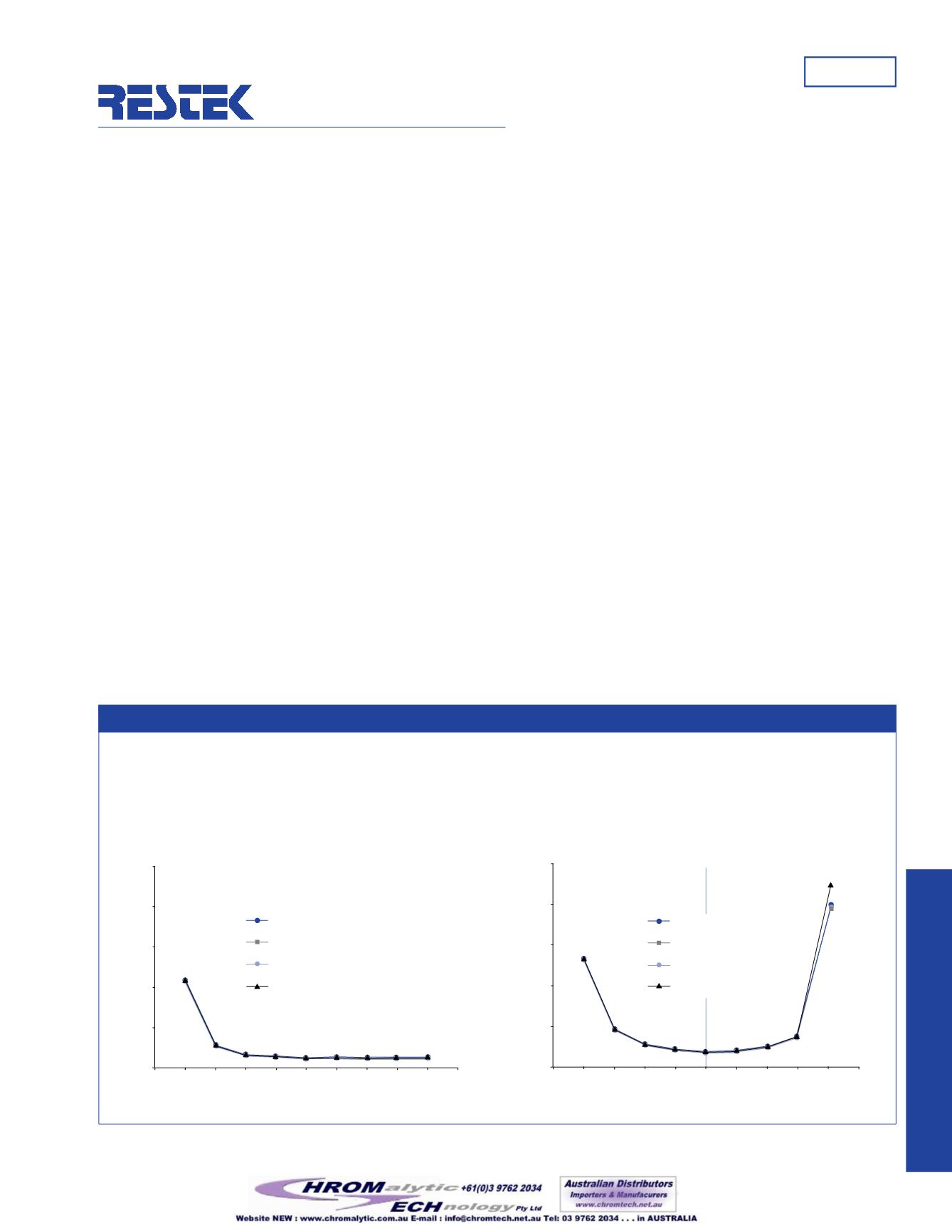
pharmaceutical
Applications
note
RestekCorporation • (800)356-1688 • (814)353-1300 •
#59512
pharmaceutical
The Ultra IBD Column Allows HPLC Separation of Polar and Non-Polar
Analytes from the Same Sample
Figure1
The Ultra IBD column retains analytes by hydrophobic and polar interactions,
whereas the C18 column is only capable of retention by hydrophobic interaction
Cephalordine Retention vs%Organic - Aqueous Portion isAmmonium Formate (20mM)
C-18phase
(10%CarbonLoad)
The ability to retain and separate polar and non-polar
analytes in the same sample can be difficult in high
performance liquid chromatography (HPLC) analyses.
Restek’s Intrinsically Base Deactivated (IBD) Ultra IBD
column can provide the retention needed to simultaneously
separate polar and non-polar analytes to more expediently
perform analyses within a single method. The Ultra IBD
phase is composed of an alkyl chain and a non-ionic
functional group. The alkyl chain ensures retention of more
hydrophobic analytes, and the intrinsic base deactivation
of the functional group reduces tailing often seen with
basic analytes. The nature of the functional group also
allows retention of charged analytes. The Ultra IBD column
is the best choice for separating mixtures of acids, bases,
zwitterions, and neutral analytes.
Ultra IBD Column Retains Analytes Across aWide Range
of pH andMobile Phase Compositions
The base deactivation and polar interaction capability of
the Ultra IBD phase remains steady across the pH stability
range of the silica. Therefore, the polar retentive capability
of the phase is not decreased as the pH is decreased; the
retention is stable for a given buffer concentration and
aqueous/organic ratio.
Using 100% water can cause chain collapse and loss of
retention in standard C18 phases, thereby requiring at least
5% organic in the mobile phase. Because the Ultra IBD
phase is immune to stationary phase collapse reverse phase
gradients starting with 100% water can be used for maxi-
mum retention of analytes. Unlike standard alkyl phases,
the Restek Ultra IBD phase results in a rugged HPLC
column that can withstand these separation extremes.
We compared the separation ability of the Ultra IBD
column to that of a C18 column using varying pH and
mobile phase ratios (Figure 1). Cephaloridine was analyzed
because it contains both polar and non-polar (hydrophobic)
functional groups. The data demonstrates the ability of the
phase to retain the analyte under a wide range of mobile
phase conditions.
The comparison revealed that the C18 column cannot
successfully retain cephaloridine when acetonitrile exceeds
40% in the mobile phase. Upon reaching 40% acetonitrile,
cephaloridine elutes with the solvent front. The C18
column is only capable of hydrophobic interaction by a
reverse phase mechanism, and so cannot exhibit the
characteristic U-shaped retention profile shown by the Ultra
IBD column.
% Organic (Acetonitrile)
25
20
15
10
5
0
0 10 20 30 40 50 60 70 80 90 100
Retention Time (minutes)
Reverse Phase
C18 - pH 3.0
C18 - pH 3.5
C18 - pH 4.5
C18 - pH 7.4
25
20
15
10
5
0
0 10 20 30 40 50 60 70 80 90 100
Retention Time (minutes)
% Organic (Acetonitrile)
Reverse Phase
Normal Phase
IBD - pH 3.0
IBD - pH 3.5
IBD - pH 4.5
IBD - pH 7.4
IBDphase


